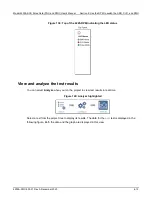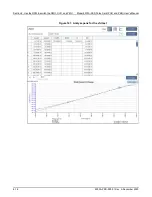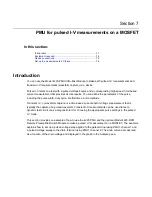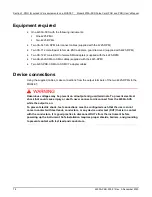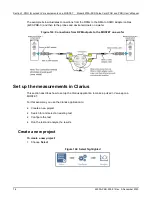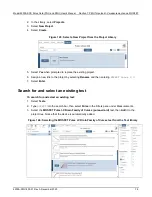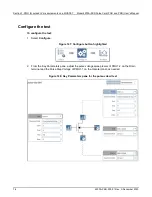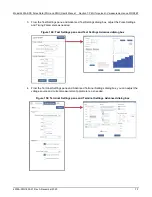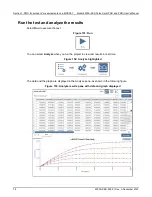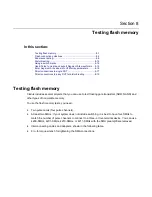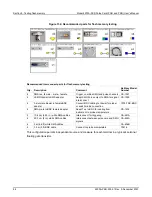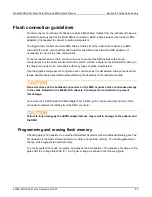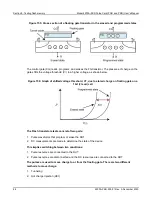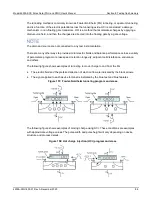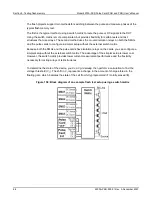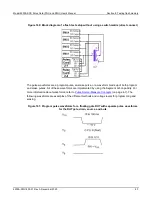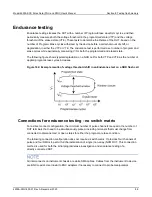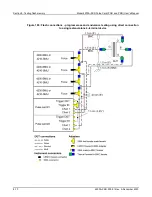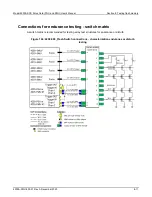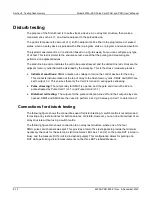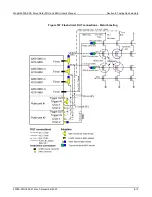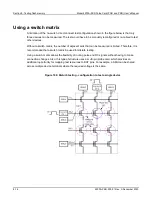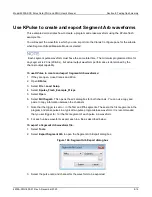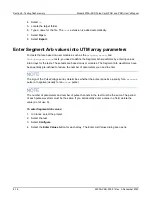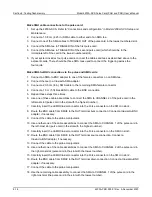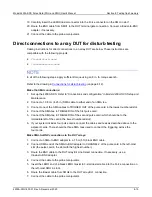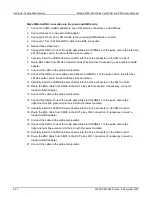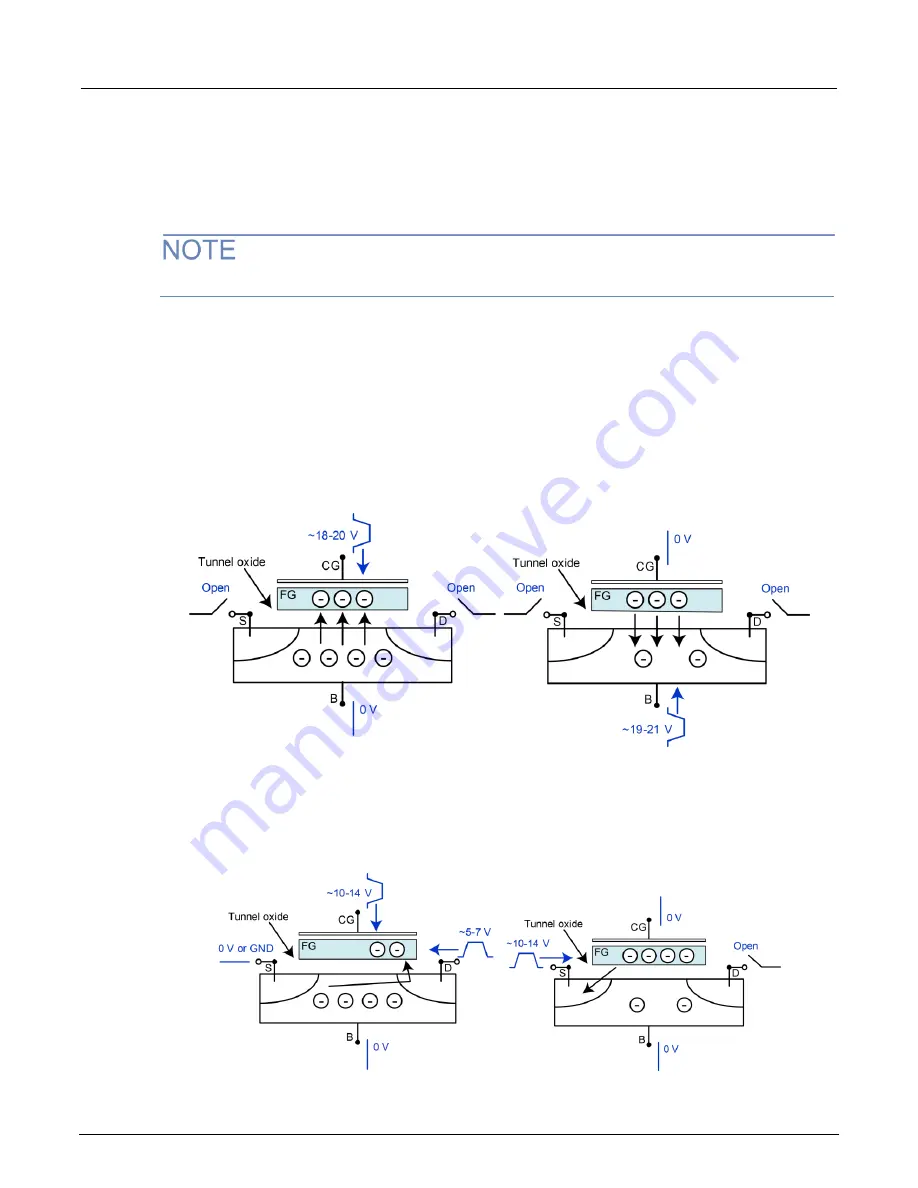
Model 4200A-SCS Pulse Card (PGU and PMU) User's Manual
Section 8: Testing flash memory
4200A-PMU-900-01 Rev. A December 2020
8-5
The tunneling method is commonly known as Fowler-Nordheim (FN) tunneling, or quantum tunneling,
and is a function of the electric potential across the tunneling oxide. HCI is considered a damage
mechanism in non-floating gate transistors. HCI is a method that accelerates charges by applying a
drain-source field, and then the charges are directed into the floating gate by a gate voltage.
The drain and source are not connected to any test instrumentation.
There are many other ways to provide similar electric fields and balance performance across a variety
of parameters: program or erase speed, retention longevity, adjacent cell disturbance, endurance,
and others.
The following figure shows examples of tunneling to move charge to and from the FG.
•
The electric field and the preferred direction of electron flow are indicated by the black arrows.
•
The signal applied to each device terminal is indicated by the blue text and blue features.
Figure 157: Fowler-Nordheim tunneling program and erase
The following figure shows examples of moving charge using HCI. These conditions are examples
with approximate voltage values. The pulse width and pulse height will vary depending on device
structure and process details.
Figure 158: Hot charge injection (HCI) program and erase

